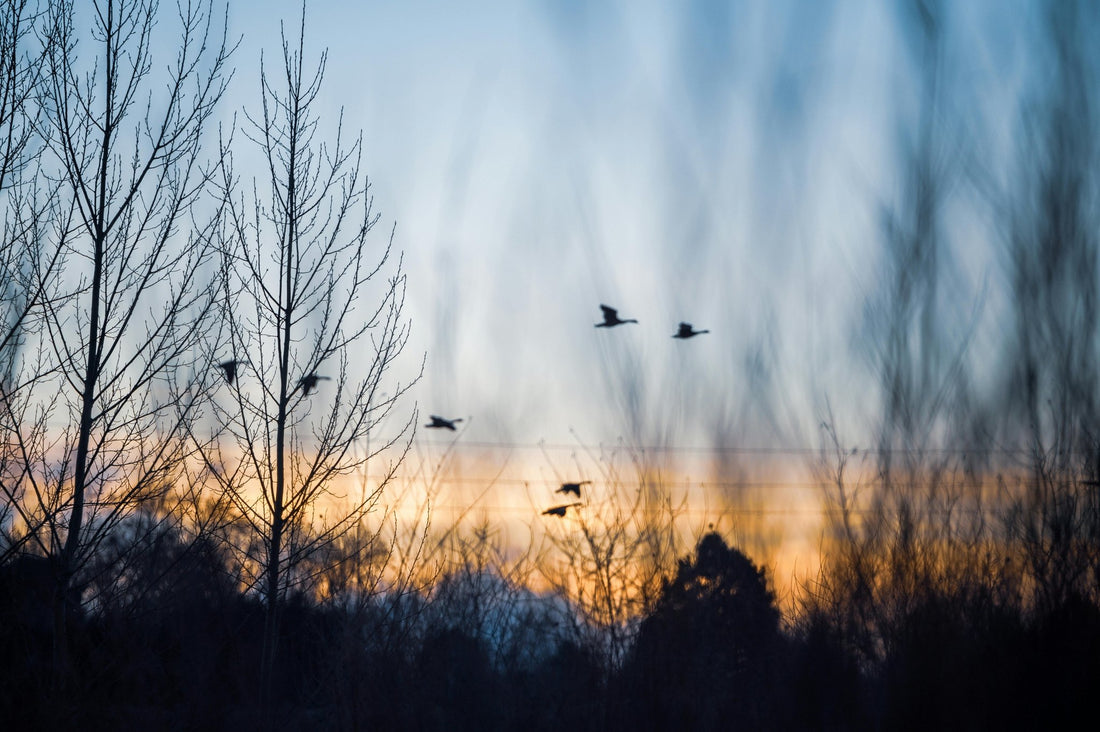
The Incredible Journey of Bird Migration: Secrets of the Skies
Share
Introduction
Every year, billions of birds embark on extraordinary journeys across continents and oceans, navigating thousands of miles with remarkable precision. Bird migration is one of nature's most awe-inspiring phenomena, driven by instinct, seasonal changes, and the need to find food and suitable nesting sites. Understanding the patterns and behaviors of migrating birds not only deepens our appreciation of nature but also improves the birdwatching experience for enthusiasts.
In this article, we will explore the epic journeys of several bird species, uncover the science behind migration, and provide practical seasonal birdwatching tips to help you spot and enjoy these incredible travelers.
Why Do Birds Migrate?
Bird migration is primarily driven by the availability of food and suitable nesting conditions. As seasons change, food sources become scarce in some regions, prompting birds to seek warmer climates and more abundant resources. Migration also helps birds avoid predators and harsh weather conditions.
Key Factors Driving Migration:
- Food Availability – Birds migrate to follow food sources like insects, berries, and seeds.
- Breeding Grounds – Birds seek specific climates and habitats to raise their young.
- Avoiding Predation – Migrating to different regions helps reduce predator encounters.
- Daylight Changes – Changes in daylight trigger hormonal changes that signal the need to migrate.
Notable Bird Migrations
Let's dive into the incredible journeys of some of the most well-known migratory birds:
1. Arctic Tern
- Distance: ~44,000 miles round trip
- Route: Arctic to Antarctica
- Highlight: The Arctic Tern holds the record for the longest migration, traveling from the Arctic to Antarctica and back each year, covering nearly the entire globe.
2. Bar-tailed Godwit
- Distance: ~7,000 miles non-stop
- Route: Alaska to New Zealand
- Highlight: The Bar-tailed Godwit can fly non-stop for over eight days without resting, making it the longest continuous flight of any bird.
3. Ruby-throated Hummingbird
- Distance: ~2,000 miles
- Route: Eastern North America to Central America
- Highlight: These tiny birds weigh less than a nickel yet cross the Gulf of Mexico in a single, non-stop flight.
4. Swainson's Hawk
- Distance: ~6,000 miles
- Route: North America to Argentina
- Highlight: Swainson's Hawks form large "kettles" of thousands of birds during migration, creating an impressive visual spectacle.
Seasonal Birdwatching Tips
Bird migration offers a golden opportunity for birdwatchers to observe rare species and unique behaviors. Here are some expert seasonal birdwatching tips to maximize your success:
Spring Birdwatching Tips
✅ Visit wetlands and coastal areas where shorebirds gather during their northbound journey.
✅ Early mornings are best for sightings since birds are most active at dawn.
✅ Use binoculars and spotting scopes to identify markings and species.
Summer Birdwatching Tips
✅ Focus on forest edges and meadows where breeding activity is high.
✅ Listen for bird songs and calls—summer is peak time for vocal activity.
✅ Bring a field guide to help identify juvenile birds.
Fall Birdwatching Tips
✅ Look for birds gathering in large flocks before their southbound migration.
✅ Check out fruiting trees and shrubs where birds fuel up for the journey.
✅ Pay attention to weather patterns—cold fronts often trigger large movements.
Winter Birdwatching Tips
✅ Visit open water areas where waterfowl tend to congregate.
✅ Provide food sources like suet and seeds in your backyard to attract winter visitors.
✅ Keep an eye out for rare Arctic species venturing south.
Challenges Faced by Migrating Birds
Despite their incredible resilience, migrating birds face numerous threats:
| Challenge | Impact | Example |
|---|---|---|
| Habitat Loss | Reduced nesting and feeding areas | Deforestation and urban sprawl |
| Climate Change | Disrupted migration patterns | Changing temperatures alter food availability |
| Predation | Increased risk from predators | Raptors and domestic cats |
| Collisions | Birds strike buildings and towers | Light pollution and glass windows |
Conservation efforts such as creating bird-friendly habitats and reducing light pollution are essential to protecting migratory birds.
How Birds Navigate Across Continents
Birds possess remarkable navigational skills, relying on several mechanisms:
- Magnetic Fields – Birds can sense the Earth's magnetic field to orient themselves.
- Celestial Navigation – Birds use the position of the sun, moon, and stars to find their way.
- Landmarks and Smells – Familiar terrain and scent trails help birds stay on course.
Conservation Efforts and How You Can Help
Protecting migratory birds requires global cooperation:
- Reduce Light Pollution – Turn off outdoor lights during migration seasons.
- Create Bird-Friendly Spaces – Plant native trees and shrubs for food and shelter.
- Support Conservation Organizations – Donate or volunteer with groups like the Audubon Society and BirdLife International.
FAQs About Bird Migration
1. Why do birds migrate at night?
Birds often migrate at night to avoid predators and take advantage of cooler, calmer air conditions.
2. What triggers birds to start migrating?
Hormonal changes caused by variations in daylight and temperature trigger the urge to migrate.
3. How can I help migrating birds in my backyard?
Provide food, fresh water, and natural shelter like trees and shrubs.
4. Do all birds migrate?
No, some species, like woodpeckers and chickadees, are year-round residents.
5. How do scientists track bird migration?
Scientists use bird banding, satellite tracking, and radar to study migration patterns.
6. Why do some birds migrate alone while others migrate in flocks?
Flocking provides safety in numbers, while solitary migration reduces competition for food.
